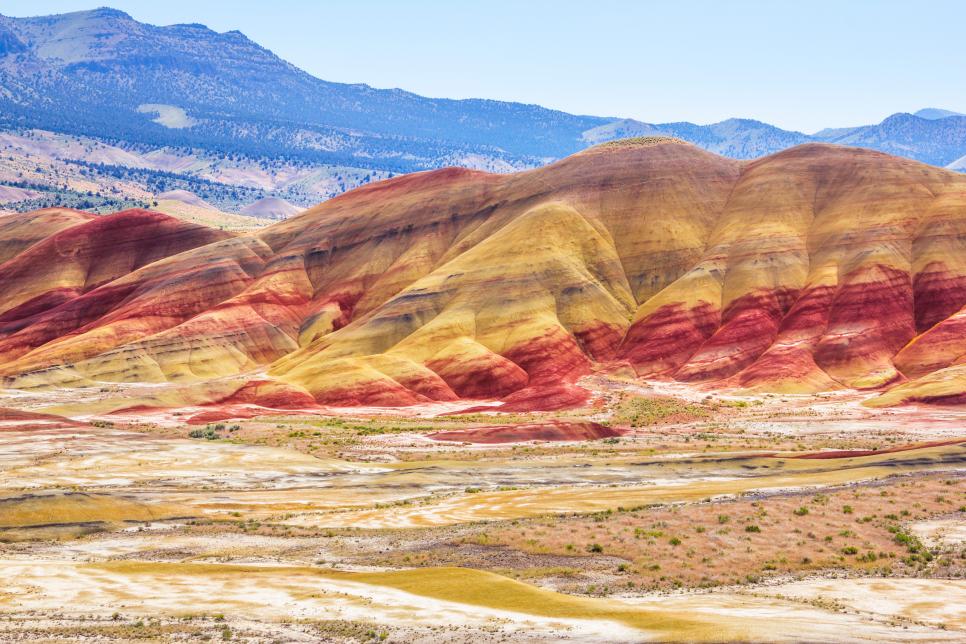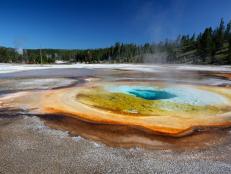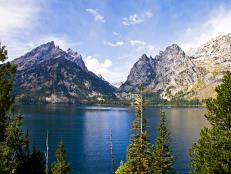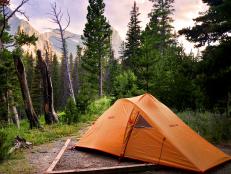14 National Parks to Visit for the Solar Eclipse
Looking for the perfect place to watch the solar eclipse? Pay a visit to one of these national parks and historic sites in the path of totality to experience the phenomenon in a unique way.

Related To:

Photo By: iStock/JamesBrey
Photo By: iStock/Robert_Ford
Photo By: iStock/Samson1976
Photo By: iStock/rozdemir01
Photo By: iStock/dszc
Photo By: iStock/RobertWaltman
Photo By: iStock/csfotoimages
Photo By: iStock/zrfphoto
Photo By: iStock/mrtom-uk
Photo By: iStock/ericfoltz
Photo By: iStock/Juanmonino
John Day Fossil Beds
Eastern Oregon is set to have some of the best views of the eclipse, putting the John Day Fossil Beds National Monument right on the center line in the path of totality. With the total black out time ranging from one minute and 40 seconds to more than two minutes across the park's three sections, officials are gearing up for one of the busiest weeks in the park's history.
Craters of the Moon
Although the Craters of the Moon National Monument and Preserve doesn't exactly lie in the direct path of totality, the park has partnered with the neighboring city of Arco, NASA and Idaho State University to create a perfect opportunity for guests to learn about this unique national park while still getting their fill of eclipse-related events. Official have planned a week-long calendar of events, ranging from special viewing opportunities to sessions with real NASA scientists.
John D. Rockefeller Jr. Memorial Parkway
Serving as a natural pathway between Yellowstone and Grand Teton national parks, John D. Rockefeller Jr. Memorial Parkway offers unbeatable eclipse viewing opportunities. Since the state of Montana isn't included in the path of totality, residents hoping to view the phenomenon from Yellowstone are encouraged to take a drive on this famous Wyoming parkway and pull over to catch a glimpse.
Grand Teton
Nestled in the heart of the Rockies, the entirety of Grand Teton National Park falls in the path of totality, making it one of the most unbelievable places in the country to catch this solar phenomenon. The park is offering four official viewing areas, located at the Gros Ventre Campground Amphitheater, Craig Thomas Discovery and Visitor Center, Jackson Lake Lodge and Colter Bay.
Fort Laramie
At famed Fort Laramie National Historic Site in southeast Wyoming, the total eclipse will last approximately 2 minutes and 11 seconds. The park is offering perfect viewing options and hosting a talk before the eclipse begins with scientist Dr. Korey Haynes, who will be breaking down exactly what an eclipse is and what is going to take place.
Scotts Bluff
Scotts Bluff National Monument in Nebraska offers some of the most breathtaking views of the sky. Sitting at approximately 835 feet high, this natural wonder is the perfect place to sit back and watch the daytime sky go dark for almost two minutes. The park is also offering other eclipse-related events like a planet walk and events showcasing what kind of tools can be used for the best viewing.
Agate Fossil Beds
Another Nebraska hot spot, the Agate Fossil Beds National Monument is offering park guests an array of viewing opportunities, packed with events in the days leading up to the eclipse. Complete with kids' activities, special learning sessions with visiting astronomers and talks with park rangers, Agate is a great place for the whole family to spend eclipse weekend.
Fort Donelson
Tennessee's Fort Donelson National Battlefield is gearing up for the expected influx in eclipse visitors, closing down parts of the park and assigning specific viewing areas in the main park unit and at another Civil War site that overlooks the Cumberland River. The time of totality in this area will last almost a full minute.
Stones River
Stones River National Battlefield, another Tennessee site located less than an hour outside Nashville, offers prime spots to view the full minute of totality alongside some Civil War history. The park is hosting themed events prior to the eclipse, as well as giving free viewing glasses to the first 1,500 visitors to enter the park.
Great Smoky Mountains
East Tennessee will see some of the best views of the eclipse, with the length of totality reaching 2 minutes and 40 seconds in some parts. Great Smoky Mountains National Park is a prime spot to watch from, with unique viewing experiences being provided at Clingman's Dome, Cades Cove and Oconaluftee.
Blue Ridge Parkway
The world-famous Blue Ridge Parkway in North Carolina offers spectacular eclipse views over the beautiful Blue Ridge Mountains. Overlooks between miles 417 and 469 will offer the best sights, but the eclipse can be seen from the parkway as far north as Roanoke, Virginia. The area is expected to be incredibly crowded, so visitors should get there early to guarantee a prime viewing spot.
Ninety Six National Historic Site
The Ninety Six National Historic Site, a mid-1700s fort and famous battleground near Columbia, South Carolina, offers visitors the chance to experience the total eclipse for 2 minutes and 26 seconds. The park is planning to host guests around the Star Fort Pond for special viewing activities from noon to 4 p.m. on the day of the eclipse.
Congaree
South Carolina's Congaree National Park is offering a weekend full of eclipse-related events. The park's "Shadows & Science" series will combine hiking and nature walks with educational sessions to give park visitors the full eclipse experience.
Fort Sumter
At Fort Sumter National Monument, the park is partnering with NASA and the National Institute of Aerospace at the Fort Moultrie site to bring visitors the ultimate eclipse experience. As part of NASA's Space Grant Ballooning Project, park guests will get to witness a broadcast of the first-ever live-streaming video of a solar eclipse.






